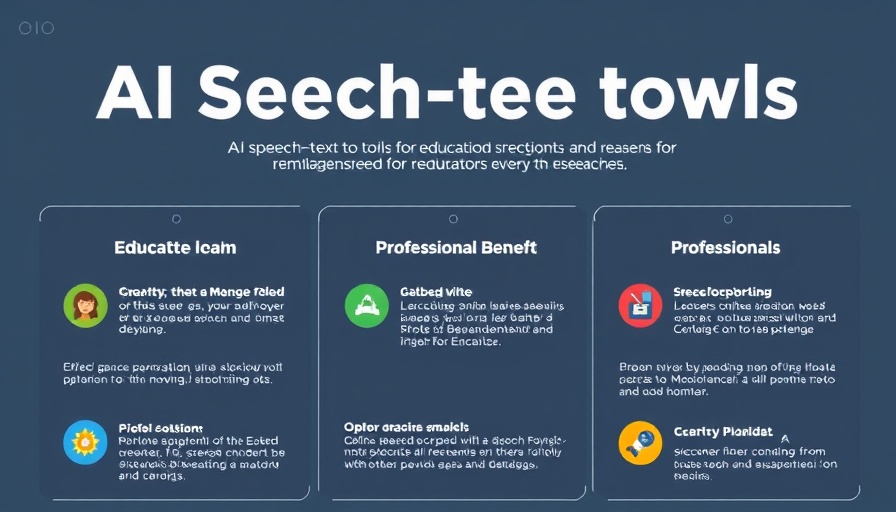
The Rise of AI Speech-to-Text Tools in Education
The advancement of AI technology has revolutionized transcription, offering far more than just straightforward speech-to-text functions. Today's educators and researchers benefit from tools that provide real-time transcription, enabling a seamless transition from auditory information to text while often accommodating different formats such as audio and video. These tools not only simplify the transcription process, but they also contribute to a richer data analysis experience, driving deeper insights in educational and research environments.
Enhancing Research Efficiency with Transcription Software
Imagine the hours saved when a researcher no longer has to painstakingly transcribe audio recordings. The automation of transcription with AI tools has led to an impressive increase in productivity for those in academia and related fields. For example, tools like Rev and Otter.ai not only convert speech into text quickly but also carry additional features like speaker identification and sentiment analysis. Such capabilities have transformed qualitative research, enhancing the ability to analyze data and extract actionable insights without extensive manual effort.
Top AI Speech-to-Text Tools: Features and Benefits
Among the plethora of AI speech-to-text tools available, some have emerged as particularly beneficial for educators and researchers. The following highlights two notable options:
- Rev AI: Known for its hybrid transcription system combining AI with human verification, it ensures high accuracy in transcription essential for sensitive data. Rev AI offers speaker labeling and sentiment analysis, making it useful for qualitative research.
- Otter.ai: This tool stands out for its real-time and post-recording transcription capabilities and integration with various platforms like Zoom and Microsoft Teams, making it an ideal choice for educators who conduct meetings and lectures online.
These features not only enhance the transcription process but also increase accessibility for diverse audiences, including those who are deaf or hard of hearing.
Important Considerations and Data Security
While AI transcription tools provide myriad benefits, users must exercise caution regarding data security. Always review the privacy policies of tools to ensure compliance with local regulations and understand how your data will be managed. The combination of AI convenience with adequate security measures is essential for maintaining trust in these technologies.
Looking Ahead: The Future of AI in Education
As we look towards the future, the integration of AI in transcription within educational spheres is expected to grow more sophisticated. Advanced features such as automated summaries, language support, and custom vocabulary will likely become standard in these tools. This evolution will not only enhance researchers’ productivity but also enrich students' learning experiences, making academic resources more accessible.
AI transcription technology is quickly becoming a cornerstone for researchers and educators alike. By embracing these advancements, educators can streamline their workflows, enhance collaboration, and ultimately drive richer educational outcomes. As we continue to leverage these technologies, the importance of being informed and discerning in our choices remains paramount.
To discover more about the range of available AI transcription tools and find the right fit for your needs, explore your options today!
 Add Row
Add Row  Add
Add 




 Add Row
Add Row  Add
Add 

Write A Comment